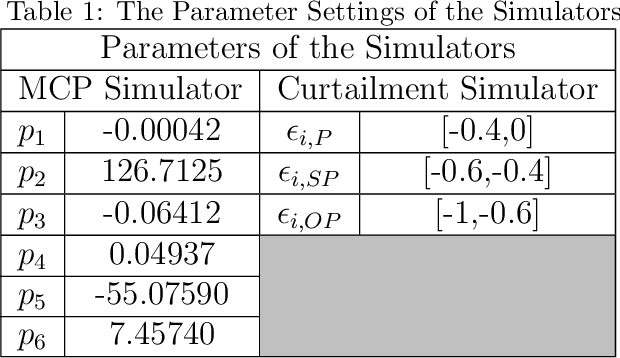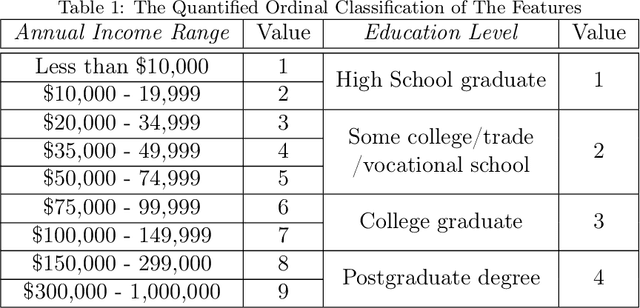Hong-Tzer Yang
Data-Driven Online Interactive Bidding Strategy for Demand Response
Feb 09, 2022



Abstract:Demand response (DR), as one of the important energy resources in the future's grid, provides the services of peak shaving, enhancing the efficiency of renewable energy utilization with a short response period, and low cost. Various categories of DR are established, e.g. automated DR, incentive DR, emergency DR, and demand bidding. However, with the practical issue of the unawareness of residential and commercial consumers' utility models, the researches about demand bidding aggregator involved in the electricity market are just at the beginning stage. For this issue, the bidding price and bidding quantity are two required decision variables while considering the uncertainties due to the market and participants. In this paper, we determine the bidding and purchasing strategy simultaneously employing the smart meter data and functions. A two-agent deep deterministic policy gradient method is developed to optimize the decisions through learning historical bidding experiences. The online learning further utilizes the daily newest bidding experience attained to ensure trend tracing and self-adaptation. Two environment simulators are adopted for testifying the robustness of the model. The results prove that when facing diverse situations the proposed model can earn the optimal profit via off/online learning the bidding rules and robustly making the proper bid.
Uncover Residential Energy Consumption Patterns Using Socioeconomic and Smart Meter Data
Apr 12, 2021



Abstract:This paper models residential consumers' energy-consumption behavior by load patterns and distributions and reveals the relationship between consumers' load patterns and socioeconomic features by machine learning. We analyze the real-world smart meter data and extract load patterns using K-Medoids clustering, which is robust to outliers. We develop an analytical framework with feature selection and deep learning models to estimate the relationship between load patterns and socioeconomic features. Specifically, we use an entropy-based feature selection method to identify the critical socioeconomic characteristics that affect load patterns and benefit our method's interpretability. We further develop a customized deep neural network model to characterize the relationship between consumers' load patterns and selected socioeconomic features. Numerical studies validate our proposed framework using Pecan Street smart meter data and survey. We demonstrate that our framework can capture the relationship between load patterns and socioeconomic information and outperform benchmarks such as regression and single DNN models.
 Add to Chrome
Add to Chrome Add to Firefox
Add to Firefox Add to Edge
Add to Edge